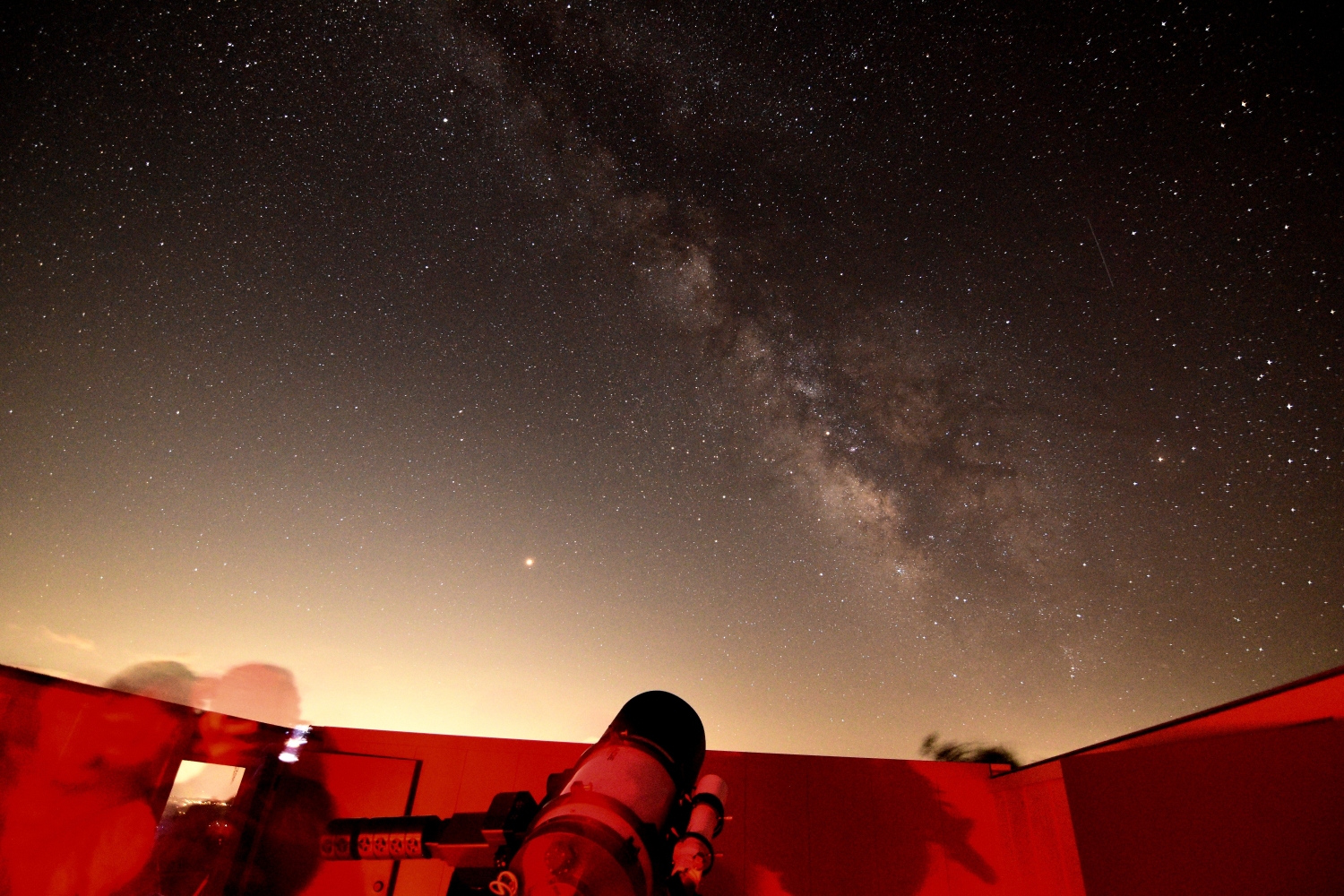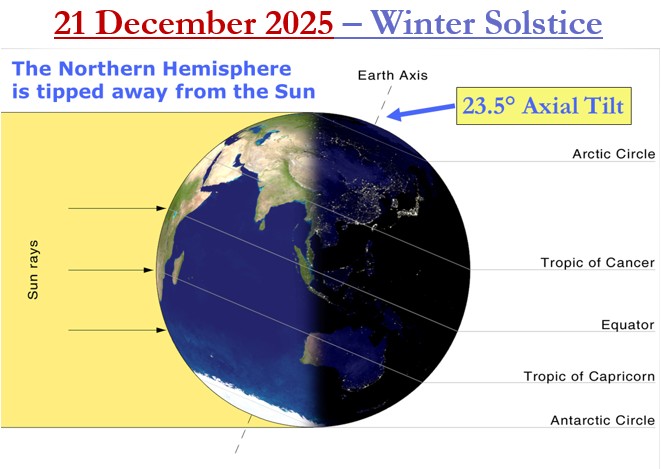There are no club speaker presentations in December or January. The next speaker presentation will occur on February 5th.
Two Public Star Gazes in December
Continue to check this home page as weather could change the venue or postpone and possibly cancel a star gaze. Check again after 5:00 p.m. on the afternoon of the observing session for the latest info and update.
Saturday – Dec. 13, 9:20 a.m. update: Road and weather conditions look very good for tonight’s star gaze at Grassland Mtn. Obs. Dress warmly. Sunset occurs at 5:17 p.m. The Geminid Meteor Shower peaks tonight. Observable planets tonight include Saturn, Uranus, Neptune, and Jupiter late. The temporary gate code is the following 5 characters, entered in quick succession: #7582. You may reach someone at the observatory by calling 828-231-6714.
12 Dec. 2025 — Friday night — This public star gaze will be held at Grassland Mountain Observatory in Madison County, with a weather backup night of Saturday, 13 December. This event is free and open to everyone — registration is not necessary to attend. A temporary gate code, required for entry, will be provided here on the day of the star gaze by 4:00 p.m. Directions to Grassland Mountain Observatory can be found here. These star gazes normally conclude about 3 to 4 hours after sunset, and visitors are not permitted to stay past the conclusion time. Sunset occurs at 5:17 p.m.
19 Dec. 2025 — Friday night — This public star gaze will be held at Grassland Mountain Observatory in Madison County, with a weather backup night of Saturday, 20 December. This event is free and open to everyone — registration is not necessary to attend. A temporary gate code, required for entry, will be provided here on the day of the star gaze by 4:00 p.m. Directions to Grassland Mountain Observatory can be found here. These star gazes normally conclude about 3 to 4 hours after sunset, and visitors are not permitted to stay past the conclusion time. Sunset occurs at 5:20 p.m.
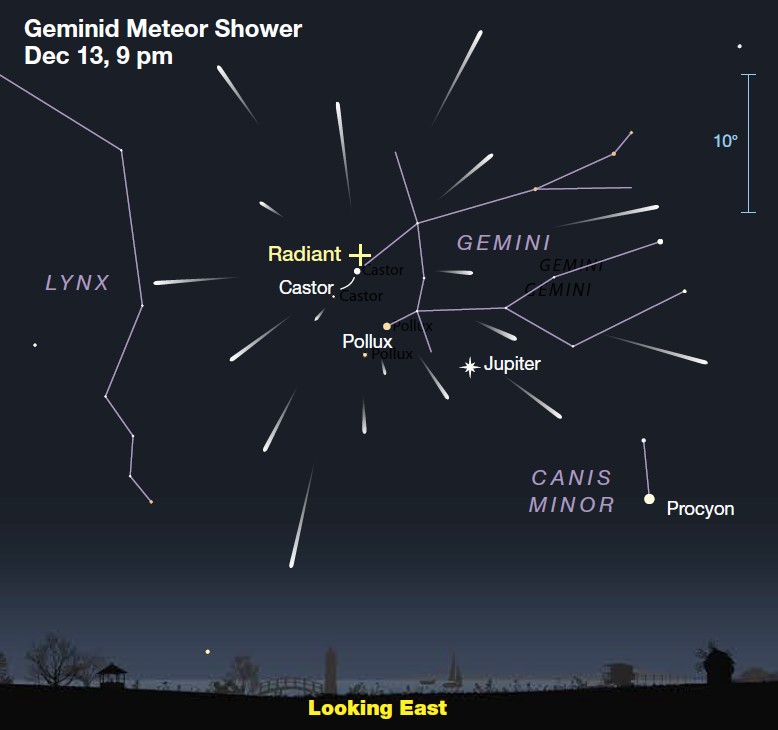 13/14 Dec. 2025
13/14 Dec. 2025
– Geminid Meteor Shower Peaks
Illustration courtesy of
SKY & TELESCOPE
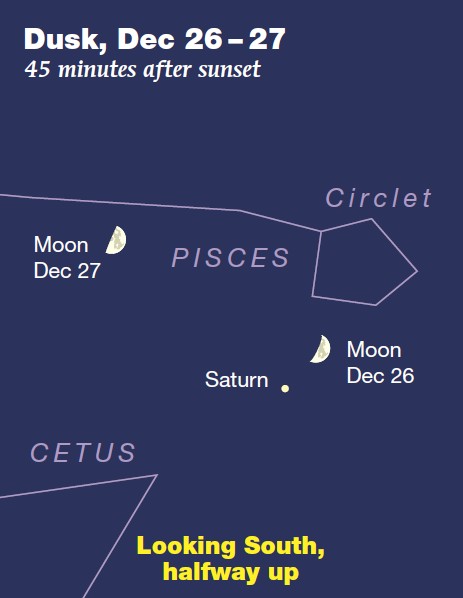 26-27 Dec. 2025
26-27 Dec. 2025
– A Waxing Crescent Moon Meets Saturn in Pisces
Illustration courtesy of
SKY & TELESCOPE
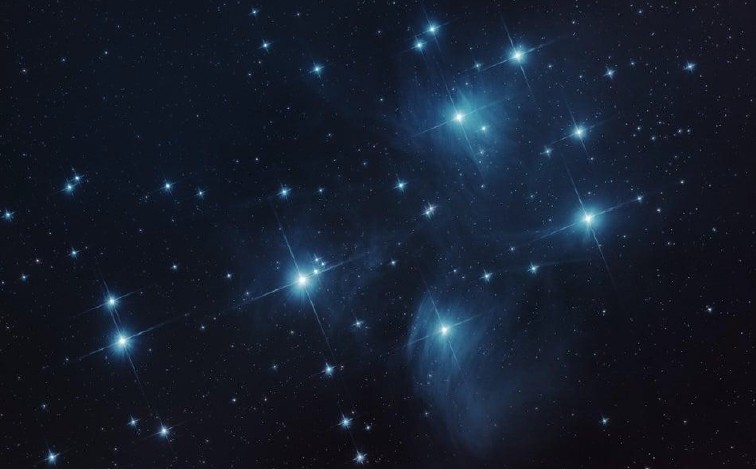 January 2026
January 2026
– The Pleiades Star Cluster Shines Brightly All Month
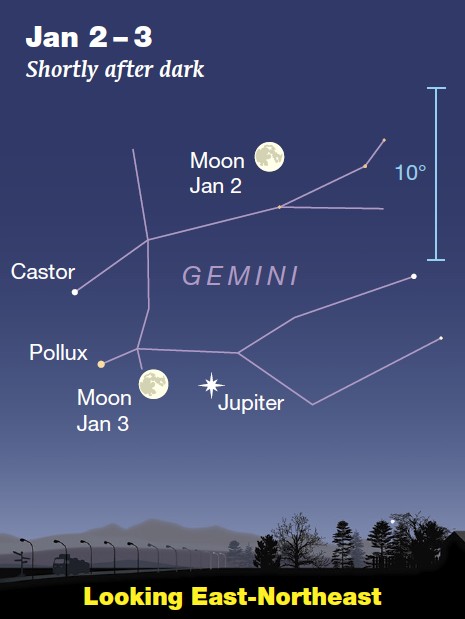 2-3 Jan. 2026
2-3 Jan. 2026
– The Full Moon Rises with Jupiter
Illustration courtesy of
SKY & TELESCOPE


